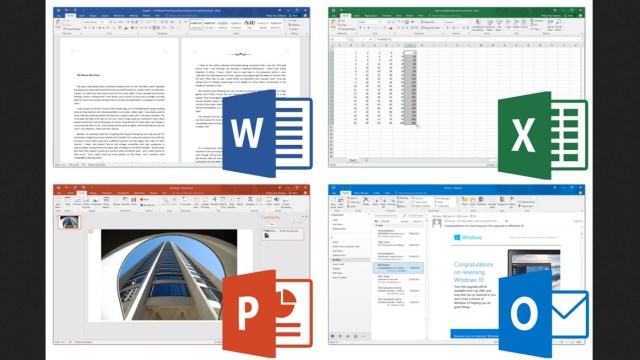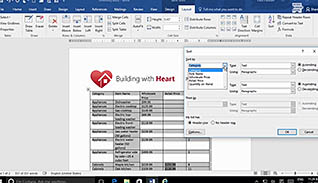

#Word 2016 version number 32 bit
That's it a simple command line to check remote PCs for office version.Ī simple way to check application architecture, basically any application in C:\Program Files (x86)\ is 32 bit and in C:\Program Files\ is 64 bit.ĭir /x shows the shortcut format of these two directories, example: Here's the revised command line that can be saved on a batch file and run against remote computers using group policy, startup script, log off or log on script and other methods for remote offĮcho %COMPUTERNAME% > \\remote\share\location\%COMPUTERNAME%.txtĭir /s excel.exe | find /i "Directory of" >\\remote\share\location\%COMPUTERNAME%.txtĮcho "Data gathered from this PC:" %COMPUTERNAME% > \\remote\share\location\%COMPUTERNAME%.txt
#Word 2016 version number update
Update all the fields in the main document in one go.The command line can be written to a batch file and save to a common drive so it can be used for remote computers or in a domain environment, the hostname of the computer must be collected in order to identify the output data to which computer it came from. Or you can press Ctrl+A followed by F9 to You can also update the field by selecting it and Printing will, provided that you have Update Fields ticked under Tools Unfortunately, if you also have the field in the main document, (for example, in the coversheet), going into Print Preview won't update Print Preview, the field will automatically update in the Headers or Footers. When you want to update the version number, all you have to do is select theĬustom tab of the File Properties dialog again where it says Properties,Ĭlick on “Version ”, and where it says Value, type the new See also the article How properties and DocProperty fields work. Makes if fast and easy to work with custom document properties and to insertĭocProperty fields. TIP: The Word add-ins DocTools DocPropertyManager I only covered the long way round because using the Insert Field dialogĭoesn't require you to know the correct syntax it's a very useful dialog, and Press Alt+F9 to toggle the field codes back off, and you'll see theĪlternatively, you could simply have pressed Ctrl+F9 to insert theįield braces and within the field braces, you could have typed: If you now press Alt+F9 to toggle field codes on, you'll see: You can then copy and paste the field into any other Headers or Footers, Need the version number to be displayed), type the Word “Version ”, followed by a space and:Ĭlick the Options button, select “Version ” in the list Then in your Header or Footer, (and on your cover sheet or wherever else you Where it says Type, select “Number ” and where it says Value, Select File + Properties and then the Custom tab.

To create a custom Document Property to store the version number: However, that is outside the scope of this article.
#Word 2016 version number archive
The version without using your macros) and to write a version control macroĪssigned to an “Update Version ” button to take care of updating theĭocument variable, the “Last Updated Date ”, the revision historyĪnd the document's filename (and the filepath, if you have an archive strategyįor old versions), as well as taking care of transitions between draft and live status.

Note: If you are a developer, you would do much better to use aĭocument Variable rather than a Document Property (so that the user can't update However, you can create a custom Document Property to store the version Perspective, the document revision number (we'll call it the version numberįrom now on to distinguish it from the thing that gets incremented on each save) should be incremented each time aĭocument is redistributed, and not each time it is saved (it couldīe saved many times during a single editing session). You can see if you select File + Properties + Statistics, this is of no use,īecause it is incremented every time the document is saved. Creating a custom Document PropertyĪlthough there is a built-in Document Property called Revision Number (which Realise you have a corruption you may have to go back to a very old file to Taking backups won't necessarily help,īecause the corruption may creep up on you gradually, and by the time you and like Fast Save and Master Documents, which are similarly broken unless If you use Versions (File + Versions) to store multiple versions of aĭocument within a single file, then it will only be a matter of time before yourĭocument corrupts and you lose all your work. How can I get Word to automatically display the document version number in the Header & Footer?Īrticle contributed by Dave Rado Why Versions should be avoided


 0 kommentar(er)
0 kommentar(er)
